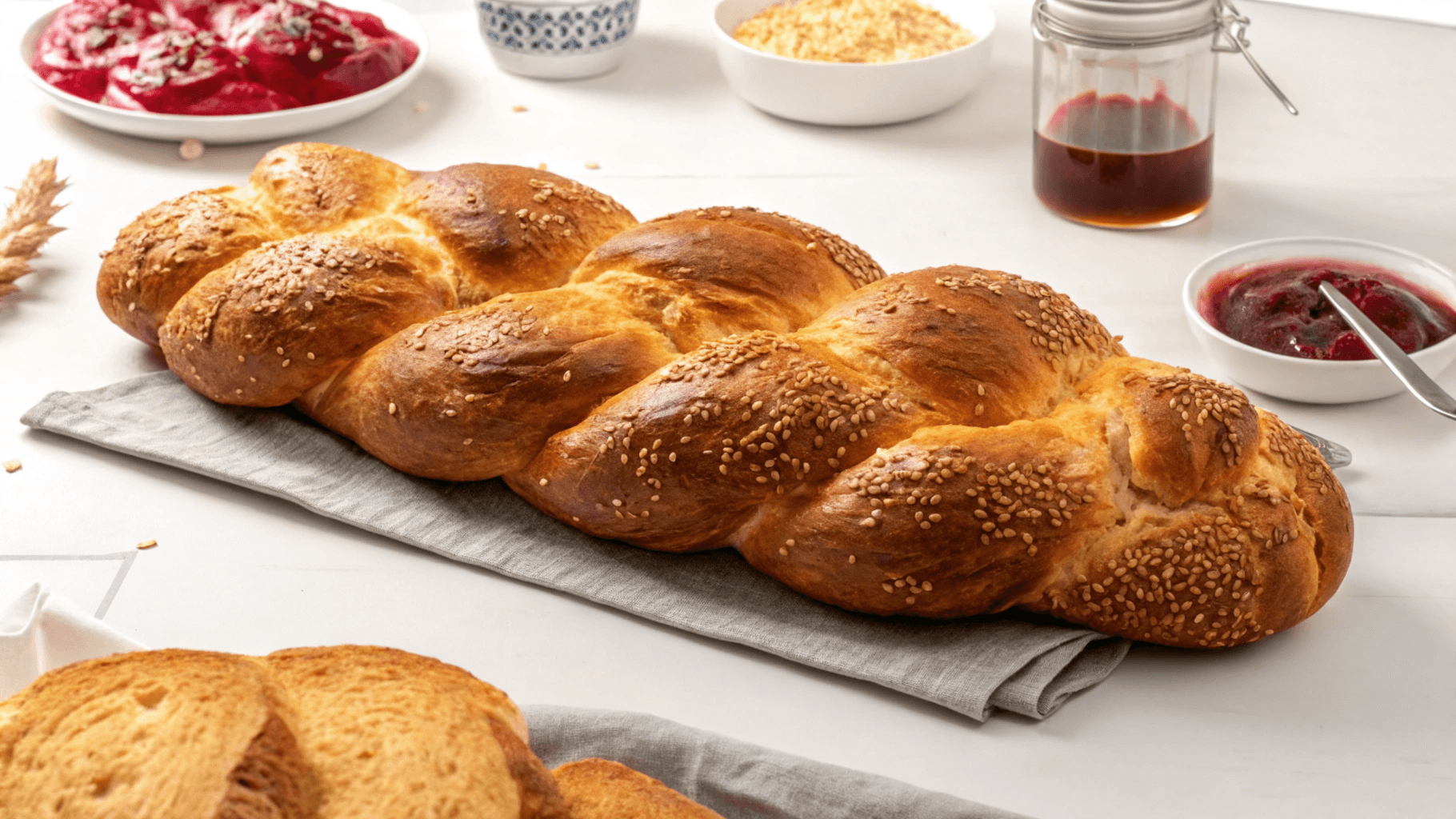Brioche vs Bread – Brioche is a rich, buttery bread made with ingredients like butter, eggs, and milk, giving it a soft, fluffy texture and golden color. Traditional bread, in contrast, uses basic ingredients like flour, water, and yeast, resulting in a denser and chewier loaf.
One of the best ways to enjoy brioche is as brioche French toast. Its rich texture soaks up custard beautifully, creating a decadent and satisfying breakfast. These qualities make brioche a luxurious and versatile option compared to regular loaves.
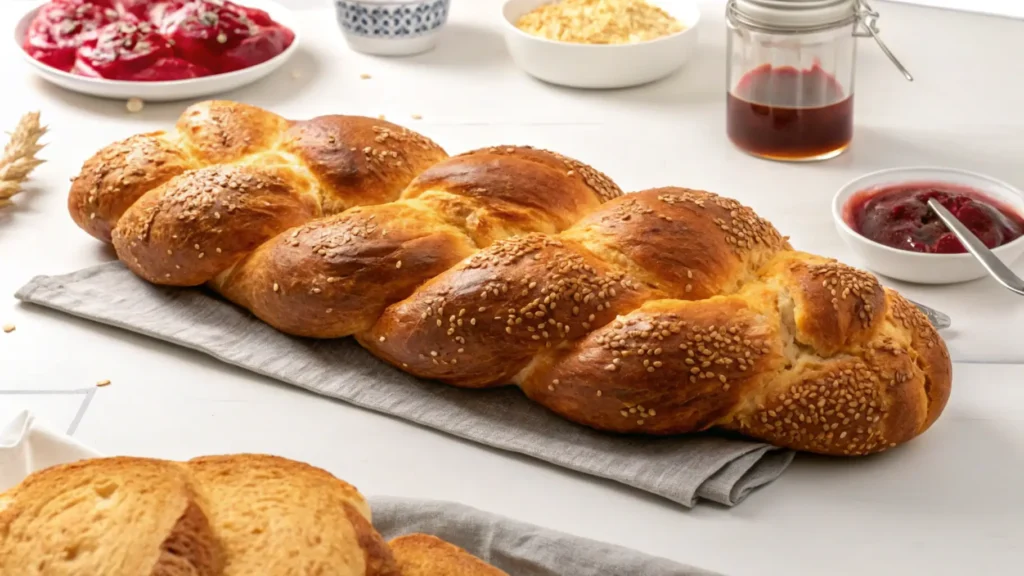
Table of Contents
What Is Brioche? How is Brioche Different from Bread?
Brioche vs Bread: Brioche is a French pastry known for its rich, buttery flavor and soft, fluffy texture. Unlike regular loaves, which use basic ingredients like flour and water, brioche includes butter, eggs, and sometimes milk, giving it a golden color and melt-in-your-mouth quality. This difference in ingredients makes brioche a richer, more indulgent option compared to traditional bread.
Its luxurious texture and slightly sweet taste make it versatile for dishes like breakfast rolls, burger buns, and desserts. To elevate its flavor and texture, you might consider toasting brioche, which enhances its buttery richness and adds a slight crunch.
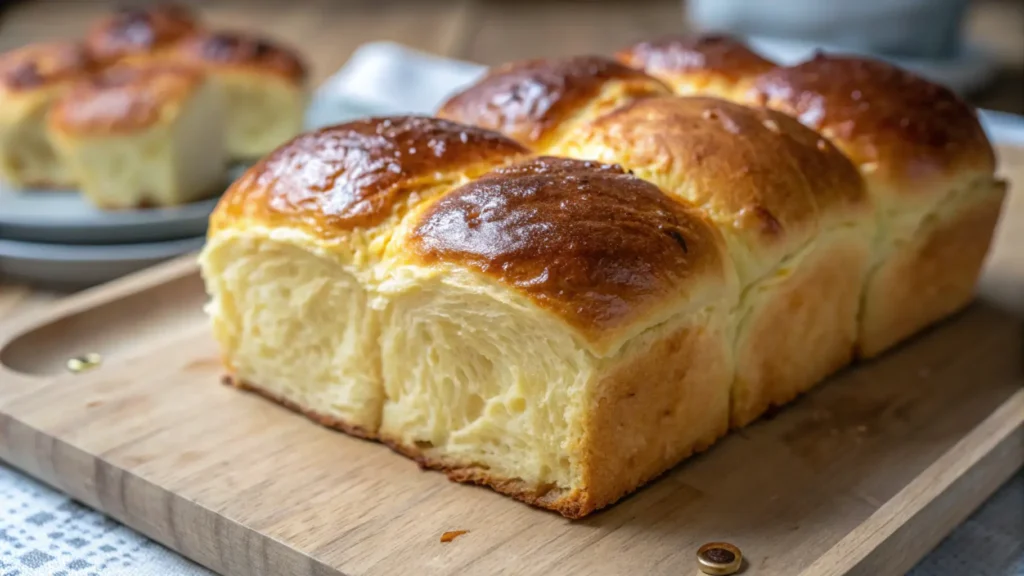
What Is Bread? How is Bread Different from Brioche?
Bakers make bread from flour, water, and yeast. These ingredients, combined with kneading and baking, create a wide variety of breads, from rustic loaves to soft sandwich varieties. Bread has served as a dietary staple for centuries and is often called the “staff of life” for its essential role in nutrition.
The key difference between Brioche vs Bread lies in their ingredients. Traditional bread, like baguettes or sourdough, uses only flour, water, yeast, and sometimes salt or sugar. Brioche, however, is richer, made with eggs, butter, and milk, giving it a soft, buttery texture and slightly sweet flavor. This makes brioche more indulgent and flavorful compared to regular bread.
In short, bread is simpler and leaner, focusing on structure, while brioche is indulgent, rich, and sweeter.
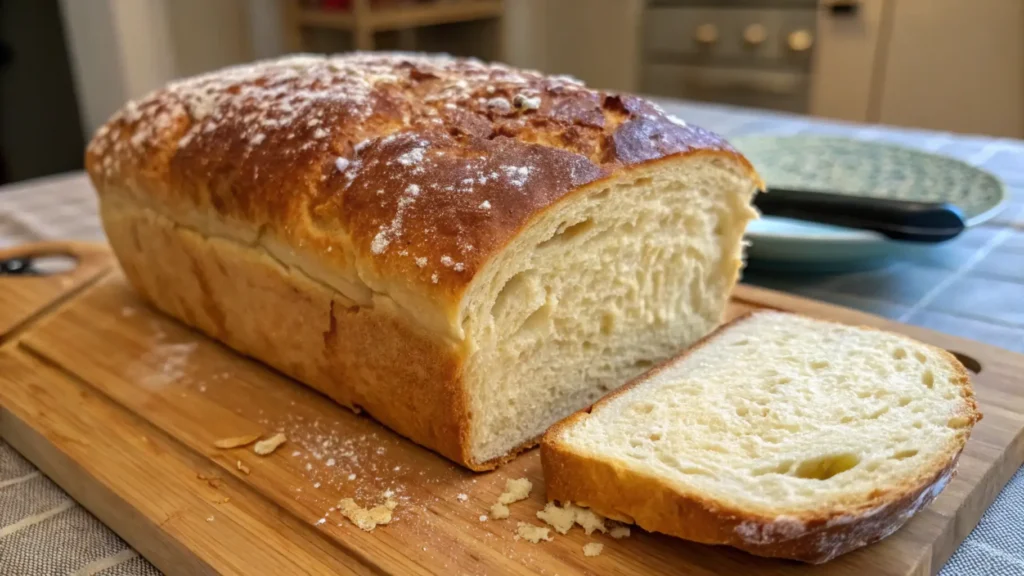
Key Ingredients of Brioche
The key ingredients in Brioche vs Bread make it richer and more indulgent than regular bread. These ingredients contribute to its sweet flavor, soft texture, and golden color. The main ingredients in brioche include:
- Flour: Typically high-protein all-purpose or bread flour, like regular bread.
- Eggs: Brioche uses more eggs, adding richness and a smooth texture.
- Butter: Gives brioche its signature softness and golden color.
- Milk: Enriches the dough and adds smoothness.
- Yeast: Like bread, but the butter and eggs slow fermentation.
- Sugar: Adds a subtle sweetness, distinguishing it from regular bread.
These ingredients make brioche’s dough more complex and buttery, setting it apart from simpler breads.
Key Ingredients of Bread
Traditional bread relies on a far simpler set of ingredients compared to brioche. The basic components of bread are:
- Flour: The most essential ingredient in bread, usually wheat flour.
- Water: Hydrates the flour and activates the yeast, forming the dough.
- Yeast: Leavens the dough by producing carbon dioxide, which causes it to rise.
- Salt: Enhances the flavor and controls the yeast fermentation process.
Some variations of bread might include small amounts of sugar, fats, or seeds, but the overall approach remains basic and simple. Unlike Brioche vs Bread, bread does not rely on the richness of eggs or butter, resulting in a firmer texture and less indulgent flavor. Brioche, with its buttery and egg-rich ingredients, offers a much softer and sweeter profile compared to regular bread.
When you ask, how is bread different from brioche? the simplicity of bread’s ingredients is the answer. Brioche’s inclusion of butter, eggs, and sometimes milk is what creates the luxurious, indulgent contrast to the leaner, more basic components of regular bread.
The Baking Process: How is Brioche Different from Bread?
The baking processes for Brioche vs Bread are similar, but the richer ingredients in brioche lead to key differences: Brioche requires a slower rise, incorporates butter and eggs for a softer, richer texture, and bakes at a higher temperature to achieve its signature light, airy crumb. In contrast, traditional bread typically uses simpler ingredients and rises faster, resulting in a denser, firmer loaf.
Brioche Baking Process:
- Slow Rise: Brioche rises slowly due to its high fat content, with longer proofing times and chilled resting periods.
- Incorporating Butter: Bakers fold butter into the dough, creating layers for a tender, flaky texture.
- Higher Temperature: Brioche is baked at a higher temperature to achieve a golden, crisp exterior.
Traditional Bread Baking Process:
- Faster Proofing: Bread rises more quickly, with shorter proofing times at room temperature.
- Kneading: Bread dough is kneaded more to develop gluten, resulting in a denser texture.
- Lower Baking Temperature: Bread is baked at a lower temperature for a chewy, crusty exterior.
In short, how is brioche different from bread in the baking process? Brioche vs Bread: Brioche requires a slower rise, incorporates butter for layers, and bakes at a higher temperature for a softer, richer result. In contrast, traditional bread usually rises faster and bakes at a lower temperature, resulting in a firmer, denser texture.
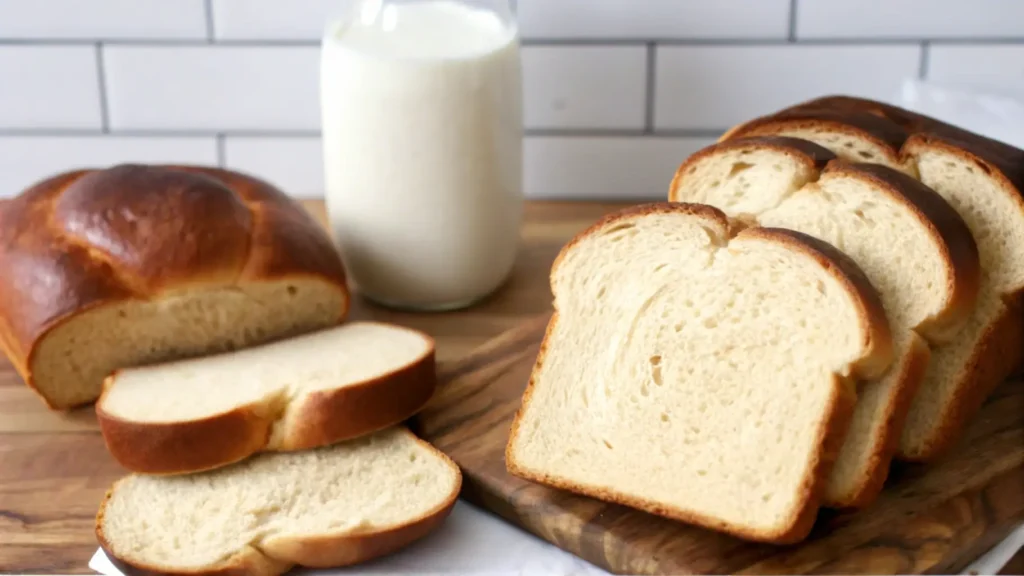
Flavor Profiles
The flavor of brioche and bread differs significantly:
Brioche Flavor:
- Buttery: The butter gives brioche a rich, indulgent taste.
- Sweet: Brioche has a slight sweetness from sugar, milk, and eggs.
- Subtle Yeast: The yeast flavor is milder compared to bread.
Bread Flavor:
- Neutral: Traditional bread has a neutral, savory flavor.
- Yeasty: Yeast flavor is more pronounced, especially in sourdough or rustic breads.
- Mildly Sweet or Tangy: Some breads like challah may have slight sweetness, but not as much as brioche.
In short, how is brioche different from bread in flavor? Brioche vs Bread: Brioche is richer, slightly sweet, and buttery, while regular bread is more neutral and savory. This difference in flavor makes brioche ideal for both sweet and savory dishes, while regular bread is often used as a versatile base for everyday meals.
Texture and Appearance
Brioche and bread differ significantly in texture and appearance:
Brioche Texture:
- Soft and Fluffy: Brioche has a light, airy crumb, thanks to butter and eggs.
- Golden Crust: The butter creates a golden-brown, slightly crisp yet tender crust.
- Moist: Brioche stays soft and moist due to its fat content.
Bread Texture:
- Chewy: Traditional bread has a firm, chewy texture.
- Crusty: Many breads, like sourdough, develop a hard, crusty exterior.
- Open Crumb: Bread can have a more open crumb with larger holes, depending on the type.
So, how is brioche different from bread in texture and appearance? Brioche is softer, fluffier, and more moist, while regular bread is chewier and often crustier.
Nutritional Differences
When considering Brioche vs Bread, one of the most notable differences lies in their nutritional content. Brioche is far richer in fats, sugars, and calories due to the high butter, egg, and milk content, while traditional bread is typically leaner, with fewer calories and fat. Here’s a breakdown of the nutritional differences:
Brioche:
- Higher Fat Content: The butter and eggs used in brioche contribute a significant amount of fat, making it much richer than most breads.
- Increased Caloric Value: Brioche can contain 200-300 calories per slice, significantly more than standard bread varieties like whole wheat or sourdough.
- Sugar: While not overwhelmingly sweet, brioche has a small amount of sugar, which adds to its caloric value and sweetness.
- Protein: Due to the presence of eggs, brioche has a moderate amount of protein, though it’s still lower than most whole-grain options.
Bread:
- Lower Fat Content: Most bread types, especially simple white or whole wheat varieties, are lower in fat and typically do not include eggs or butter.
- Fewer Calories: Regular bread, particularly those with fewer added ingredients, generally contains fewer calories than brioche, especially when compared per slice.
- Less Sugar: Bread contains minimal sugar, making it a more neutral option in terms of sweetness and overall calorie count.
- Higher Fiber in Whole Grains: Whole-grain and multigrain breads are higher in fiber compared to brioche, offering more nutritional benefits for digestive health.
Ultimately, how is brioche different from bread in terms of nutrition? Brioche vs Bread: Brioche is much richer and more indulgent, making it less suitable for those seeking a low-calorie or low-fat option, while traditional loaves provide a more balanced choice for daily consumption. Bread’s simpler ingredients result in fewer calories and less fat compared to the richer, butter- and egg-heavy brioche.
Common Uses of Brioche
When considering how is brioche different from bread? in terms of usage, it’s important to understand that brioche is often reserved for more special or indulgent dishes. Its rich texture and slightly sweet flavor make it a versatile ingredient for both sweet and savory recipes. In Brioche vs Bread, brioche is often used for French toast, bread pudding, or gourmet burgers, while traditional bread is typically used for sandwiches or as a side to accompany meals. Common uses of brioche include:
- Breakfast Dishes: Brioche is frequently used for breakfast options such as French toast, where its rich texture absorbs the egg mixture beautifully, resulting in a decadent dish.
- Desserts: Because of its subtle sweetness and soft crumb, brioche is a popular choice for creating pastries like tarts, pudding, or doughnuts.
- Sandwiches and Burgers: Brioche buns are commonly used for gourmet burgers and sandwiches, adding a buttery softness that elevates the overall eating experience.
- Bread Pudding: Brioche’s soft texture makes it ideal for bread pudding, soaking up custard and transforming into a luxurious dessert.
Brioche vs Bread: In comparison, bread is often the more practical choice for everyday meals. While brioche is a treat, bread serves as a daily staple in various forms like sandwiches, side dishes, and simple toasts. Bread’s versatility makes it an essential part of many meals, whereas brioche is typically reserved for indulgent dishes or special occasions.
Common Uses of Bread
In contrast to brioche, traditional bread is more versatile for everyday uses due to its simpler ingredients and denser texture. How is bread different from brioche? In terms of use, bread is often the go-to option for sandwiches, toast, or serving alongside soups and salads. In the Brioche vs Bread comparison, bread’s neutral flavor and sturdier texture make it better suited for everyday meals, while brioche is typically reserved for richer, more indulgent dishes.
- Sandwiches: Bread is most commonly used for sandwiches, from basic PB&J to hearty sub sandwiches, offering a firm texture that holds fillings well.
- Toast: Bread, particularly types like white, whole wheat, and sourdough, is ideal for toasting, making a crispy and satisfying accompaniment to meals or a breakfast dish.
- Side Dishes: Many types of bread, including rolls, baguettes, and focaccia, are served as side dishes in meals, complementing soups, salads, and main courses.
- Casseroles and Soups: Bread is often used to soak up broth in dishes like French onion soup or in casseroles like stuffing.
Overall, Brioche vs Bread: Bread is a daily food item with more basic applications, while brioche’s richer qualities make it better suited for specialty dishes, desserts, and gourmet sandwiches. The indulgent texture and flavor of brioche set it apart as a treat, whereas regular bread is a staple for everyday use.
Cultural Significance: How is Brioche Different from Bread?
Brioche vs Bread: Brioche and bread hold different cultural significance:
Brioche:
- French Heritage: Brioche is deeply tied to French culinary traditions and often seen as a symbol of luxury.
- Symbol of Wealth: Historically, its rich ingredients made it a food for the wealthy.
- Modern Appeal: Today, brioche is popular in gourmet dishes like burgers and brunches worldwide.
Bread:
- Global Staple: Bread is a fundamental food across cultures, representing sustenance and survival.
- Symbol of Simplicity: It often symbolizes humility and nourishment in religious and cultural rituals.
- Variety: Bread takes many forms worldwide, from naan to challah to focaccia.
So, how is brioche different from bread culturally? Brioche symbolizes luxury and celebration, while bread is a simple, essential food found in many cultures.
Cost and Accessibility: How is Brioche Different from Bread?
Brioche and bread differ significantly in cost and accessibility:
Brioche:
- Higher Ingredient Costs: Brioche requires expensive ingredients like butter, eggs, and milk.
- Specialty Item: Often found in specialty bakeries or high-end stores, making it less accessible.
- Labor-Intensive: The process is more time-consuming, adding to the cost.
Bread:
- Affordable: Bread is more budget-friendly and widely available in most stores.
- Mass Production: Produced in large quantities with fewer ingredients, making it easier to distribute globally.
- Variety: Bread comes in various price ranges, but even artisanal varieties are cheaper than brioche.
In terms of cost, how is brioche different from bread? Brioche is more expensive due to its ingredients and labor-intensive process, while bread is more affordable and accessible.
Popularity and Trends: How is Brioche Different from Bread?
Brioche and bread have distinct trends in popularity:
Brioche:
- Gourmet Popularity: Brioche is trending in upscale restaurants, often used for gourmet burgers and pastries.
- Instagram-Worthy: Its golden color and soft texture make it a popular subject for food photography.
- Specialty: Brioche is typically a special-occasion food due to its richness.
Bread:
- Ever-Present Staple: Bread remains a global dietary essential, with artisan varieties like sourdough gaining popularity.
- Health Trends: Whole grain, gluten-free, and low-carb breads are in demand due to health trends.
In terms of popularity, how is brioche different from bread? Brioche is a luxury trend tied to gourmet food culture, while bread remains a staple with broader, consistent appeal.
FAQs
Is brioche better for you than bread?
No, brioche is not healthier than regular bread. Brioche vs Bread: Brioche contains more calories, fat, and sugar due to the high butter and egg content. Regular bread, especially whole grain varieties, is usually lower in fat and calories and offers more fiber. This makes traditional bread a healthier option for those seeking a lighter, more nutrient-dense choice.
What is the difference between normal bread and brioche?
Brioche vs Bread: Brioche is richer and sweeter than normal bread. It’s made with butter, eggs, and milk, giving it a soft, buttery texture. Normal bread, like white or whole wheat, contains fewer ingredients, making it denser and more neutral in flavor. This difference in ingredients and texture sets brioche apart from traditional bread.
What makes brioche bread different?
Brioche vs Bread: Brioche is different due to its rich ingredients—butter, eggs, and milk—giving it a sweet, soft, and fluffy texture. Regular bread, made with just flour, water, yeast, and salt, is denser and less flavorful. This difference in ingredients results in a more indulgent and tender texture for brioche compared to the firmer, simpler texture of regular bread.
What are the disadvantages of brioche bread?
Expensive: The rich ingredients make brioche more costly than regular bread.
High in calories and fat: Not ideal for those on a low-calorie diet.
Low in fiber: Less filling and not as nutritious as whole grain bread.
Less versatile: Best for gourmet dishes, not everyday use.
Conclusion: Brioche vs Bread – Key Differences Summarized
Brioche vs Bread: Brioche and bread may look alike, but their ingredients and texture set them apart. Brioche is enriched with butter and eggs, giving it a soft, sweet, and airy texture, while regular bread is firmer and made with simpler ingredients. Brioche’s richness makes it ideal for gourmet dishes, like French toast and pastries, whereas traditional bread is a versatile everyday staple.
In conclusion, how brioche is different from bread comes down to richness, texture, and ingredients. Brioche’s buttery softness makes it a favorite for indulgent recipes, while bread remains a reliable choice for daily meals.

